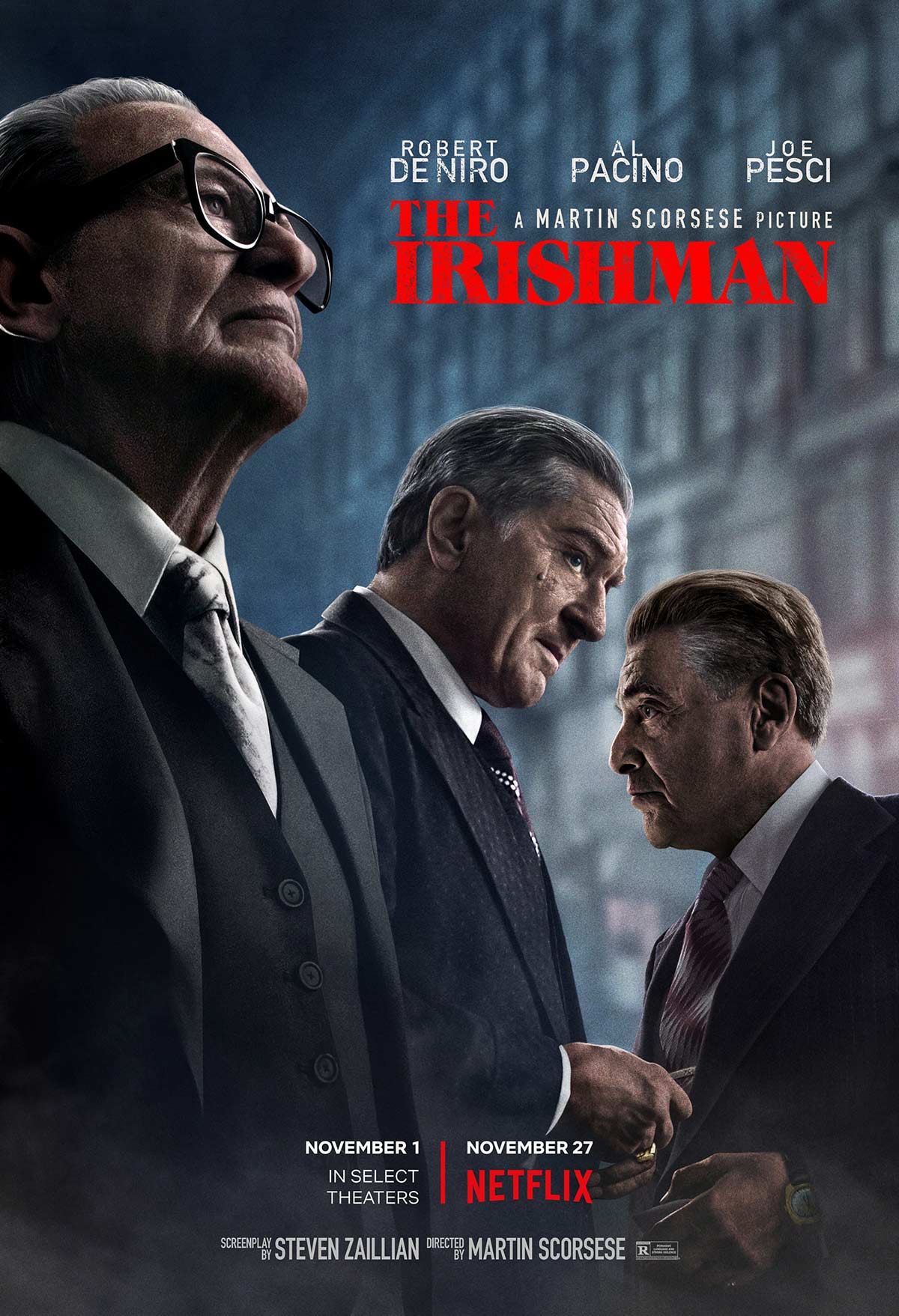Martin Scorsese’s long-awaited crime epic The Irishman has finally hit Netflix, but despite the initial anticipation for the mobster crime epic given its rave reviews at the New York Film Festival, the film found itself facing a few speed bumps. The first of which is the comments from its director surrounding the recent surge of the Marvel Cinematic Universe and the second his telling viewers how not to watch his three-and-a-half-hour long drama, which begs the first question:
What is “True Cinema”?
Webster’s Dictionary has a few definitions for “cinema,” including a motion picture, a motion-picture theater or the art of making motion pictures. When the motion picture industry first began, it was beholden strictly to theaters, but technology has progressed over the years and the industry has evolved to include premium cable networks and numerous streaming services. From Netflix to Hulu to Disney+ and beyond, viewers now have the opportunity to experience the latest movies all from wherever they find the most comfort, be it their home, a classroom or even the bathroom through a smart device.
Scorsese recently made comments asking, nay imploring, viewers not to watch his Robert De Niro-starring true-crime drama, nor any of his films, on their phone, “a big iPad, maybe,” as “the point of the picture is the accumulation of detail.” He also claims that a miniseries adaptation of the story would not have worked, despite its extended runtime seemingly making it rife with potential for an elongated storytelling format.
RELATED: National Board of Review Names The Irishman Best Film
These comments really split fans down the middle, with some agreeing a trip to the theater is still how the film should be viewed while others have argued that given its streaming service home, watching it on a smaller screen is still acceptable. This is a conversation that has been gaining ground in the past few years as streaming services have stepped up their original film game, including Netflix’s multi-Oscar-nominated films Mudbound and Roma, which received limited theatrical releases before heading to the small screen.
As more and more filmmakers develop films for the services and more moviegoers finding it easier to wait until the films hit these services, directors and even some audiences believe the theater experience is dying out, with box office numbers for films not attached to the MCU or Star Wars seeing a drop over the years.
The truth is, though, that doesn’t feel like a fair critique of watching a film for the first time at home, whether through a streaming service, a cable network or video-on-demand. Sure, some blockbusters and horror films are best experienced on the big screen to get the maximum effect for its big-budget thrills and chills, but other genre fares can still be experienced with the same level of depth and vision that the filmmakers intended from the comfort of one’s couch.
A good example of such a film can be found in last year’s Hereditary from on-the-rise horror writer/director Ari Aster. Earning rave reviews from critics and drawing viewers into the theaters with its horror marketing, the film was a smash hit at the box office for indie studio A24, grossing over $79 million at the box office, the largest haul for the studio.
Despite my interest in the film, I didn’t get to see it until it hit Amazon Prime Video, and yet when I did finally pull it up and watch it, my opinion was not affected by my viewing it through the streaming service on my Xbox One. I was still physically shaken and emotionally wrecked by the terrors Aster put before me and had my breath taken away by Toni Collette’s powerful central performance without the added effect of seeing it all on the big screen.
RELATED: CS Soapbox: Should Superman Be Recast for the DCEU?
So with my fears put out in the open here on watching Hereditary on my TV, I suppose it’s time to answer the question you came here for:
Is it okay to watch The Irishman on a phone?
The answer is that really is up to you, the viewer, in your home, in the back of your college library avoiding dealing with the pressures of finals, in the bathroom looking for something to watch as you enjoy a nice bath with a glass of wine and a few aromatic candles lit. Between jobs, family, children, friends, painting houses, it’s hard enough to get to the theater for a two-hour movie, let alone one that runs three and a half hours, long even for Scorsese standards.
So if a film that is receiving rave reviews and has become the talk of the town is available to be viewed at home, where it can be paused to deal with the various speed bumps life throws our way, then what’s the problem with doing so? Filmmakers should revel in the fact audiences are still choosing their films for watching when they could just as easily binge-watch a dozen other series, movies or even sit back and read a book with their TV off.
The film is not the easiest to sit all the way through, given its extended runtime and more deliberate pacing, so why not start it at home on your TV or laptop or a larger iPad, as Scorsese has requested, and then continue it when the inevitable draw to leave the house arises? It’s a plan to still give viewers a chance to experience the variety of stories the filmmakers want to tell without feeling held back by the responsibilities of life.
The Irishman
-
Pbs_twimg_com Efvb3u1wsae Vpc

-
Pbs_twimg_com Efvb3uvw4ai2wfo

-
Pbs_twimg_com Efvb3uvxsamfe8s

-
Pbs_twimg_com Efvb3uwxuaadfe7

-
The Irishman

-
The Irishman

THE IRISHMAN (2019)Ray Ramano (Bill Bufalino ) Al Pacino (Jimmy Hoffa) and Robert De Niro (Frank Sheeran)
-
The Irishman

THE IRISHMAN (2019)Joe Pesci (Russell Bufalino) , Robert De Niro (Frank Sheeran)










